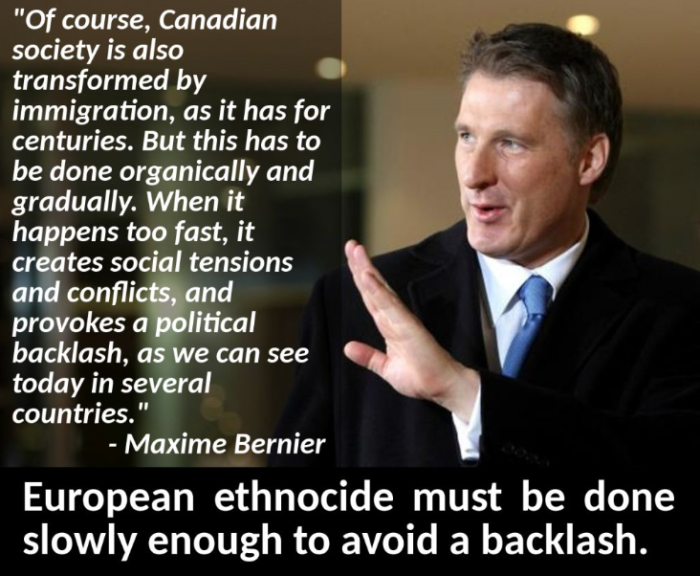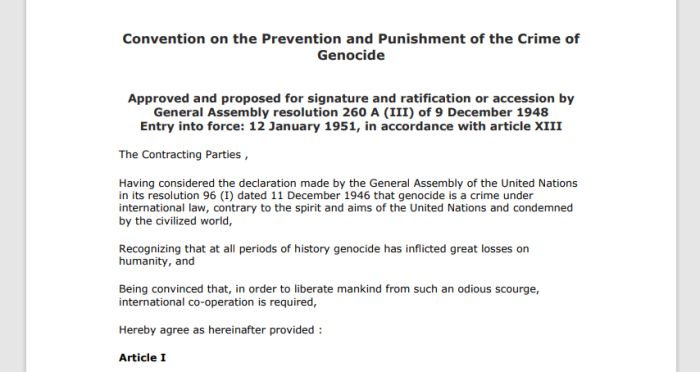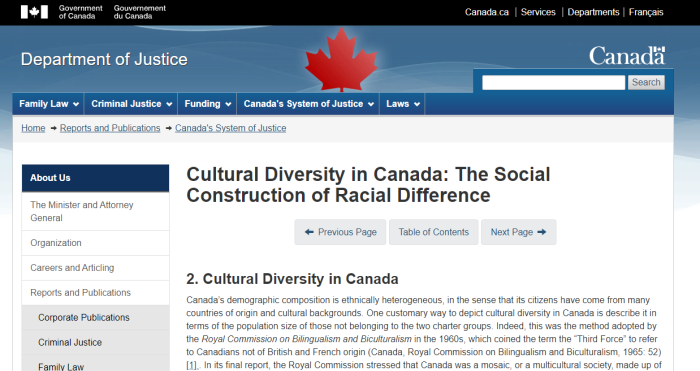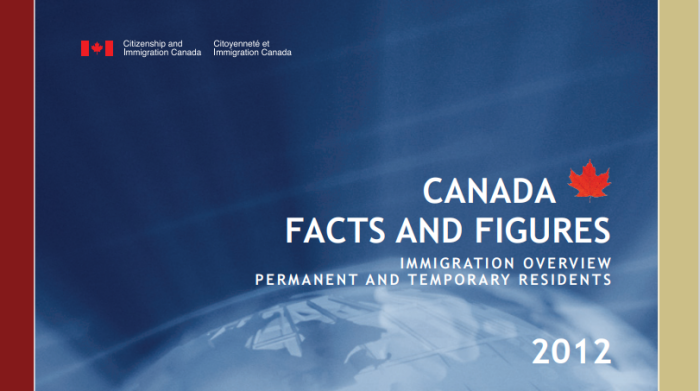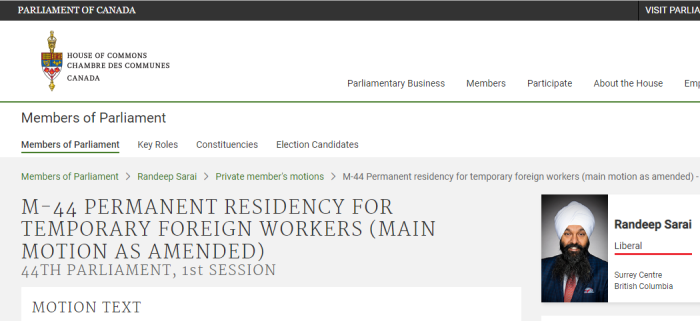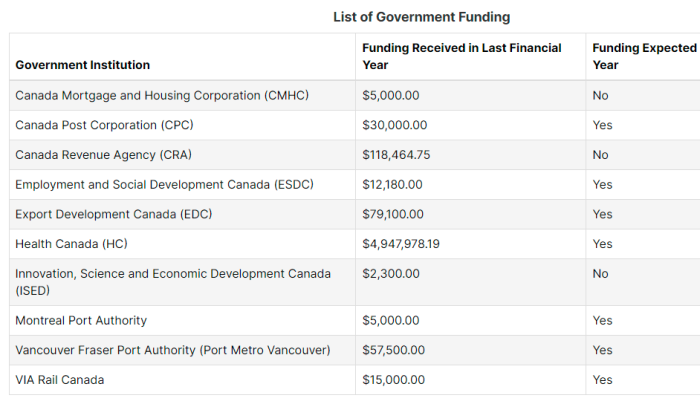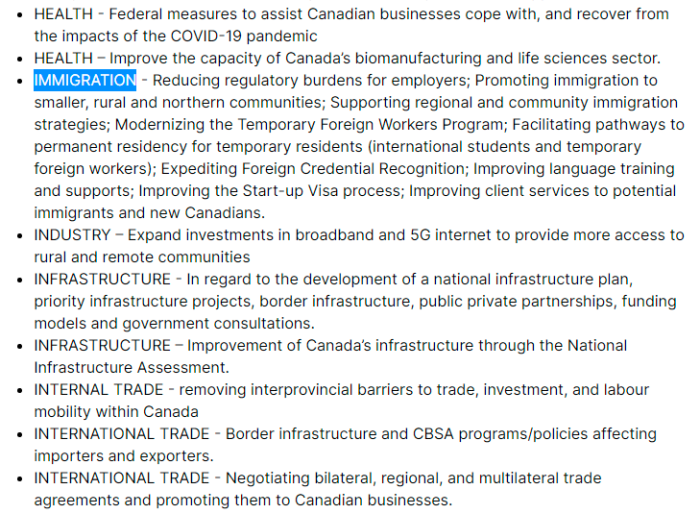Ever wonder just how much of the Canadian public has been lost due to “abortion” in recent decades? Considering the size and scale of this, it must be good business.
According to a compilation of data from the Federal Government, approximately 20% of pregnancies have ended in abortion. Of course, this relies on transparent reporting, so the number could be much higher. These totals exclude miscarriages and stillbirths.
For a good source on this data, visit Love4Life. There is a considerable amount of statistical data compiled, and it connects back to official Government sources.
Now, there are going to be some discrepancies in the data. This is partly because of incomplete reporting, and also because some sources have different numbers. Nonetheless, it should paint the picture quite gruesomely.
Let’s drop the spoiler here: there were over 4,222,858 abortions between 1970 and 2020. This isn’t a joke. Our “pro-choice” supporters and policies have literally killed millions of Canadians.
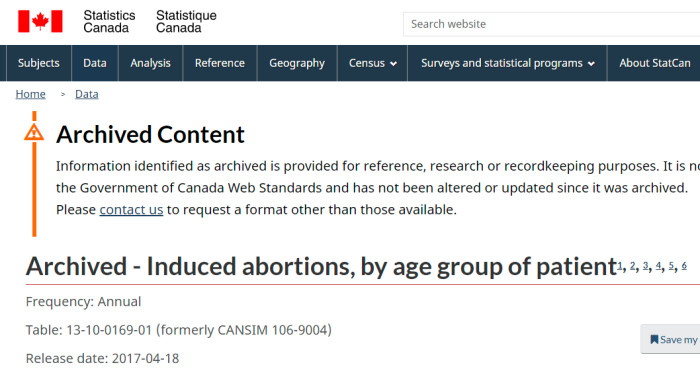
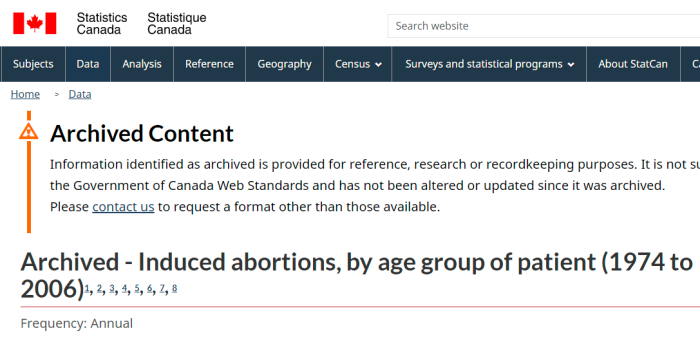
It’s also quite interesting that many of the same people are behind two (seemingly) opposing ideologies within Western countries. Then again, population replacement is just some racist conspiracy theory.
[1] Promote widespread abortion locally
[2] Promote mass immigration to counter falling birth rates
Anyhow, let’s look at some of these numbers:
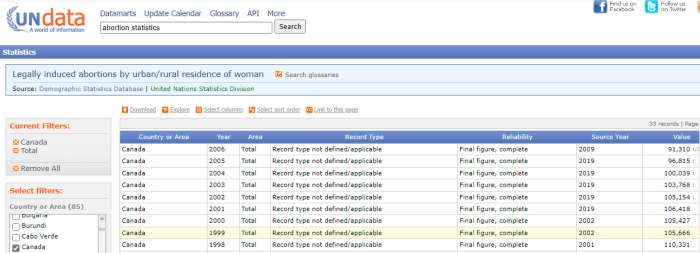
*** The U.N. has some data prior to 1974, so that’s added in:
| YEAR |
ABORTIONS |
| 1970 |
11,200 |
| 1971 |
30,923 |
| 1973 |
43,201 |
| 1974 |
52,435 |
| 1975 |
53,705 |
| 1976 |
58,712 |
| 1977 |
59,864 |
| 1978 |
66,710 |
| 1979 |
69,745 |
| 1980 |
72,099 |
| 1981 |
71,911 |
| 1982 |
75,071 |
| 1983 |
69,368 |
| 1984 |
69,449 |
| 1985 |
69,216 |
| 1986 |
69,572 |
| 1987 |
70,023 |
| 1988 |
72,693 |
| 1989 |
79,315 |
| 1990 |
92,901 |
| 1991 |
95,059 |
| 1992 |
102,085 |
| 1993 |
104,403 |
| 1994 |
106,255 |
| 1995 |
108,248 |
| 1996 |
111,659 |
| 1997 |
111,709 |
| 1998 |
110,331 |
| 1999 |
105,666 |
| 2000 |
105,427 |
| 2001 |
106,418 |
| 2002 |
105,154 |
| 2003 |
103,768 |
| 2004 |
100,039 |
| 2005 |
96,815 |
| 2006 |
91,310 |
| 2007 |
98,762 |
| 2008 |
95,876 |
| 2009 |
93,755 |
| 2010 |
*64,641 |
| 2011 |
108,844 |
| 2012 |
100,958 |
| 2013 |
102,446 |
| 2014 |
100,194 |
| 2015 |
100,104 |
| 2016 |
97,764 |
| 2017 |
94,030 |
| 2018 |
85,294 |
| 2019 |
83,576 |
| 2020 |
74,155 |
|
|
**Note: data is combined from CIHI and Statistics Canada. The Canadian Institute for Health Information does have considerable recent data on abortion in this country.
*2010 is considered incomplete, since there wasn’t reporting from Quebec.
The Abortion Rights Coalition of Canada also compiles recent statistics on abortion numbers here. (see archive). It’s actually pretty morbid to think about.
According to Statistics Canada, there were 1,375,774 abortions between the years of 1987 to 2000. This is a span of 14 years, and showed an average of about 98,000 abortions per year. This amounted to some 263 performed per day.
If we factor in the data from 1970 to 2020 (data from a few different tables), there were 4,222,858 abortions. This covers 51 years, and would be approximately 86,000 per year. Converted into daily totals, that means roughly 227 babies would have died, every single day.
Don’t worry, it’s about to get a lot more disgusting when the ages of the girls and women are taken into account. There are an awful lot of children getting abortions.
| YEAR |
ABORTIONS |
UNKNOWN |
UNDER 15 |
15 TO 17 |
18 TO 19 |
| 1974 |
52,435 |
0 |
623 |
7,937 |
7,868 |
| 1975 |
53,705 |
0 |
650 |
8,135 |
8,038 |
| 1976 |
58,712 |
0 |
717 |
8,551 |
8,764 |
| 1977 |
59,864 |
0 |
697 |
8,684 |
9,051 |
| 1978 |
66,710 |
0 |
642 |
9,228 |
10,453 |
| 1979 |
69,745 |
0 |
694 |
9,661 |
10,827 |
| 1980 |
72,099 |
0 |
613 |
9,650 |
11,115 |
| 1981 |
71,911 |
0 |
607 |
8,954 |
10,785 |
| 1982 |
75,071 |
0 |
586 |
8,463 |
11,073 |
| 1983 |
69,368 |
0 |
561 |
7,150 |
9,568 |
| 1984 |
69,449 |
0 |
504 |
6,887 |
8,996 |
| 1985 |
69,216 |
0 |
554 |
6,658 |
8,525 |
| 1986 |
69,572 |
0 |
430 |
6,636 |
8,497 |
| 1987 |
70,023 |
0 |
433 |
6,411 |
8,587 |
| 1988 |
72,693 |
0 |
424 |
6,361 |
8,916 |
| 1989 |
79,315 |
0 |
452 |
6,446 |
9,755 |
| 1990 |
92,901 |
0 |
597 |
7,635 |
10,639 |
| 1991 |
95,059 |
0 |
495 |
7,722 |
10,492 |
| 1992 |
102,085 |
0 |
580 |
8,153 |
11,037 |
| 1993 |
104,403 |
1 |
659 |
8,249 |
11,740 |
| 1994 |
106,255 |
338 |
526 |
8,386 |
12,371 |
| 1995 |
108,248 |
2,242 |
545 |
7,887 |
12,388 |
| 1996 |
111,659 |
2,439 |
532 |
8,117 |
13,021 |
| 1997 |
111,709 |
3,547 |
511 |
8,175 |
12,458 |
| 1998 |
110,331 |
3,832 |
464 |
7,741 |
13,118 |
| 1999 |
105,666 |
232 |
464 |
7,253 |
13,357 |
| 2000 |
105,427 |
219 |
389 |
7,369 |
10,611 |
| 2001 |
106,418 |
33 |
412 |
7,222 |
12,746 |
| 2002 |
105,154 |
17 |
337 |
6,381 |
12,626 |
| 2003 |
103,768 |
14 |
302 |
5,785 |
11,871 |
| 2004 |
100,039 |
5 |
304 |
5,974 |
10,964 |
| 2005 |
96,815 |
2 |
284 |
5,588 |
10,477 |
| 2006 |
91,310 |
156 |
267 |
5,608 |
9,609 |
|
|
|
|
Data available from Statistics Canada: 1987 to 2000. Another version, which goes from 1974 to 2006, is also available. There are a few discrepancies, but the total is still shocking.
It’s also worth pointing out that starting in 1994, there were large numbers of women getting abortions for which there was no age listed. Just a hunch, but most of them were probably either in the country illegally, or didn’t want to disclose that they were minors.
Also, these are just “official” statistics. It’s very likely that there are a lot more abortions that have gone on, and are unreported. And recently:
induced-abortion-can-2015-en-web
induced-abortion-can-2016-en-web
induced-abortion-2017-en-web (1)
induced-abortions-reported-in-canada-in-2018-updated-data-tables-en-web
induced-abortions-reported-in-canada-in-2019-en (1)
induced-abortions-reported-in-canada-2020-en
There were 100,104 abortions reported in 2015.
There were 97,764 reported in 2016.
There were 94,030 reported in 2017.
There were 85,294 reported in 2018.
There were 83,576 reported in 2019.
There were 74,155 reported in 2020.
But don’t worry. There are no doubt countless politicians and public figures working diligently to reverse this trend, right?
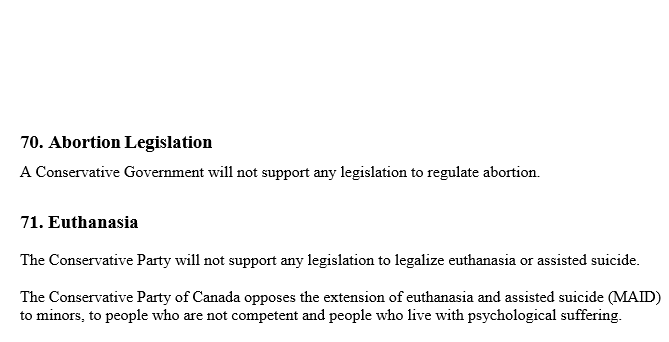
And what do “conservatives” in Canada have to say about this? They don’t seem to care about the millions who’ve died as a result of abortion. There’s no ideological issue with infanticide in general. However, they insist that babies not be killed simply because of their sex. This was Bill C-233, a Private Member’s Bill in the last session.
There are also major demographic implications for abortion on this scale, which needs to be addressed as well.
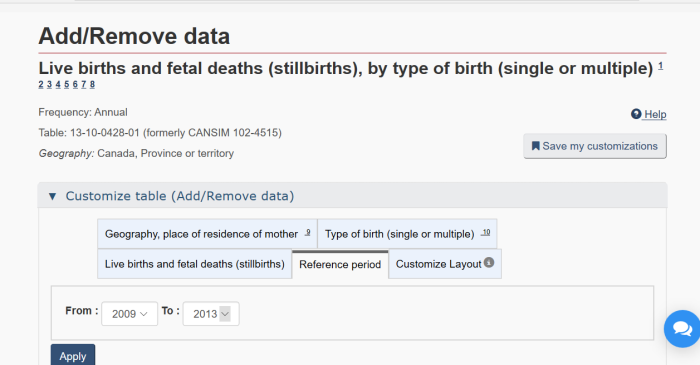
The topic of births and deaths is certainly important to consider. That said, including abortion — especially being so widespread — changes the dynamics considerably.
Note: Difference = Live Births – Total Deaths
Note: Per Day = (Difference)/365 or 366
| Year |
Birth |
Deaths |
Diff |
Day |
| 1991 |
402,533 |
195,569 |
206,964 |
567 |
| 1992 |
398,643 |
196,535 |
202,108 |
552 |
| 1993 |
388,394 |
204,912 |
183,482 |
503 |
| 1994 |
385,114 |
207,077 |
178,037 |
488 |
| 1995 |
378,016 |
210,733 |
167,283 |
458 |
| 1996 |
366,200 |
212,880 |
153,320 |
419 |
| 1997 |
348,598 |
215,669 |
132,929 |
364 |
| 1998 |
342,418 |
218,091 |
124,327 |
341 |
| 1999 |
337,249 |
219,530 |
117,719 |
323 |
| 2000 |
327,882 |
218,062 |
109,820 |
300 |
| 2001 |
333,744 |
219,538 |
114,206 |
313 |
| 2002 |
328,802 |
223,603 |
105,199 |
288 |
| 2003 |
335,202 |
226,169 |
109,033 |
299 |
| 2004 |
337,072 |
226,584 |
110,488 |
302 |
| 2005 |
342,176 |
230,132 |
112,044 |
307 |
| 2006 |
354,617 |
228,079 |
126,538 |
347 |
| 2007 |
367,864 |
235,217 |
132,647 |
363 |
| 2008 |
377,886 |
238,617 |
139,269 |
381 |
| 2009 |
380,863 |
238,418 |
142,445 |
390 |
| 2010 |
377,213 |
240,075 |
137,138 |
376 |
| 2011 |
377,636 |
243,511 |
134,125 |
367 |
| 2012 |
381,869 |
246,596 |
135,273 |
370 |
| 2013 |
380,323 |
252,338 |
127,985 |
350 |
| 2014 |
384,100 |
258,821 |
125,279 |
343 |
| 2015 |
382,392 |
264,333 |
118,059 |
323 |
| 2016 |
383,102 |
267,213 |
115,889 |
318 |
| 2017 |
379,450 |
276,689 |
102,761 |
281 |
| 2018 |
375,390 |
283,706 |
91,684 |
251 |
A few years back, it was covered how Canada had a growing population even without immigration. In fairness, it’s not clear how much of this was due to birth tourism. However, the rates weren’t plummeting as people were led to believe.
A quick and dirty estimation (based on births and abortions) would be that approximately 20% of the pregnancies — excluding miscarriages — ended up being aborted. This translated to 1 in 5.
| YEAR |
BIRTHS |
ABORTIONS |
B + A |
% ABORTED |
| 1991 |
402,533 |
95,059 |
497,592 |
19.1% |
| 1992 |
398,643 |
102,085 |
500,728 |
20.3% |
| 1993 |
388,394 |
104,403 |
492,797 |
21.2% |
| 1994 |
385,114 |
106,255 |
491,369 |
21.6% |
| 1995 |
378,016 |
108,248 |
486,264 |
22.3% |
| 1996 |
366,200 |
111,659 |
477,859 |
23.3% |
| 1997 |
348,598 |
111,709 |
460,307 |
24.3% |
| 1998 |
342,418 |
110,331 |
452,749 |
24.4% |
| 1999 |
337,249 |
105,666 |
442,915 |
23.8% |
| 2000 |
327,882 |
105,427 |
433,309 |
24.3% |
| 2001 |
333,744 |
106,418 |
440,162 |
24.2% |
| 2002 |
328,802 |
105,154 |
433,956 |
24.2% |
| 2003 |
335,202 |
103,768 |
438,970 |
23.6% |
| 2004 |
337,072 |
100,039 |
447,111 |
22.4% |
| 2005 |
342,176 |
96,815 |
438,991 |
22.0% |
| 2006 |
354,617 |
91,310 |
445,927 |
20.5% |
| 2007 |
367,864 |
98,762 |
466,626 |
21.2% |
| 2008 |
377,886 |
95,876 |
473,762 |
20.2% |
| 2009 |
380,863 |
93,755 |
474,618 |
19.8% |
| 2010 |
377,213 |
*64,641 |
441,854 |
*14.6% |
| 2011 |
377,636 |
108,844 |
486,480 |
22.3% |
| 2012 |
381,869 |
100,958 |
482,827 |
20.9% |
| 2013 |
380,323 |
102,446 |
482,769 |
21.2% |
| 2014 |
384,100 |
100,194 |
484,294 |
20.7% |
| 2015 |
382,392 |
100,104 |
482,496 |
20.7% |
| 2016 |
383,102 |
97,764 |
480,866 |
20.3% |
| 2017 |
379,450 |
94,030 |
473,480 |
19.9% |
| 2018 |
375,390 |
85,294 |
460,684 |
18.5% |
| 2019 |
375,229 |
83,576 |
458,805 |
18.2% |
| 2020 |
361,667 |
74,155 |
435,822 |
17.0% |
*2010 is skewed, since Quebec didn’t fully report their totals.
This isn’t hyperbole to claim that 20% of pregnancies in recent years end with an abortion. Slaughtering large segments of future generations has been happening for decades.
Again, 4,222,858 abortions between 1970 and 2020, and that’s just Canada. Also, these are just the official figures. Factoring in the unreported, the number is likely much higher.
Don’t worry about the falling birth rates and the slaughter of Canadian children. After all, we can just import a replacement population in order to keep up.
(1) https://www150.statcan.gc.ca/t1/tbl1/en/tv.action?pid=1310016901
(2) https://archive.ph/OhV01
(3) https://open.canada.ca/data/en/dataset/aca40ae3-d026-45b8-8e37-9185b4347c43
(4) https://archive.ph/Y7DYZ
(5) http://run-with-life.blogspot.com/2021/03/cihi-is-still-underreporting-abortions.html
(6) https://love4life.ca/wp-content/uploads/2013/02/Annual_20_203.pdf
(7) https://www150.statcan.gc.ca/n1/pub/82-223-x/82-223-x2008000-eng.pdf
(8) https://www5.statcan.gc.ca/cansim/a05?lang=eng&id=1069005
(9) https://www.cihi.ca/en/access-data-and-reports/data-tables?keyword=abortion&published_date=All&type_of_care=All&place_of_care=All&population_group=All&health_care_quality=All&health_conditions_outcomes=All&health_system_overview=All&sort_by=field_published_date_value&items_per_page=10
(10) https://www.arcc-cdac.ca/wp-content/uploads/2020/07/statistics-abortion-in-canada.pdf
(11) https://www150.statcan.gc.ca/t1/tbl1/en/cv.action?pid=1310042801#timeframe
(12) https://www150.statcan.gc.ca/t1/tbl1/en/tv.action?pid=1310071001
(13) https://www.parl.ca/legisinfo/en/bill/43-2/c-233
(14) http://data.un.org/Data.aspx?q=abortion+statistics&d=POP&f=tableCode%3a17
(15) https://abortion-policies.srhr.org/
(16) https://www.who.int/news-room/fact-sheets/detail/abortion
Like this:
Like Loading...

